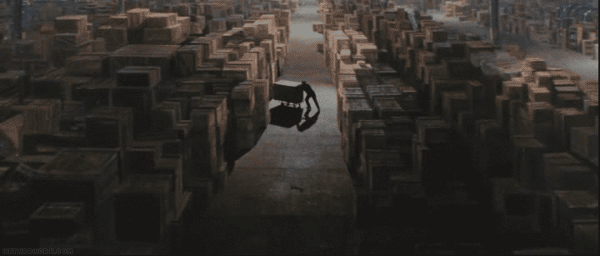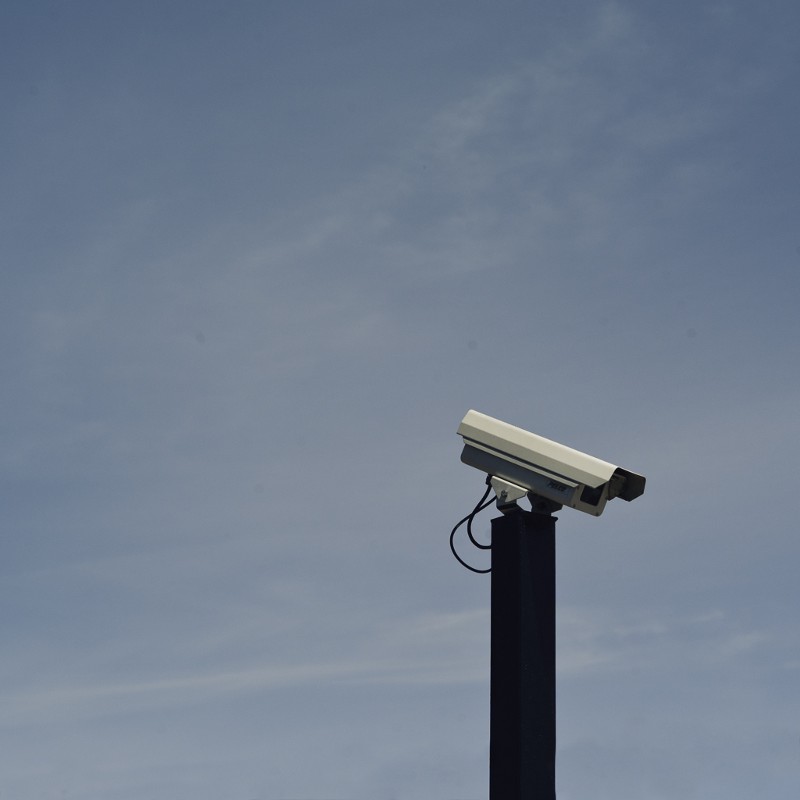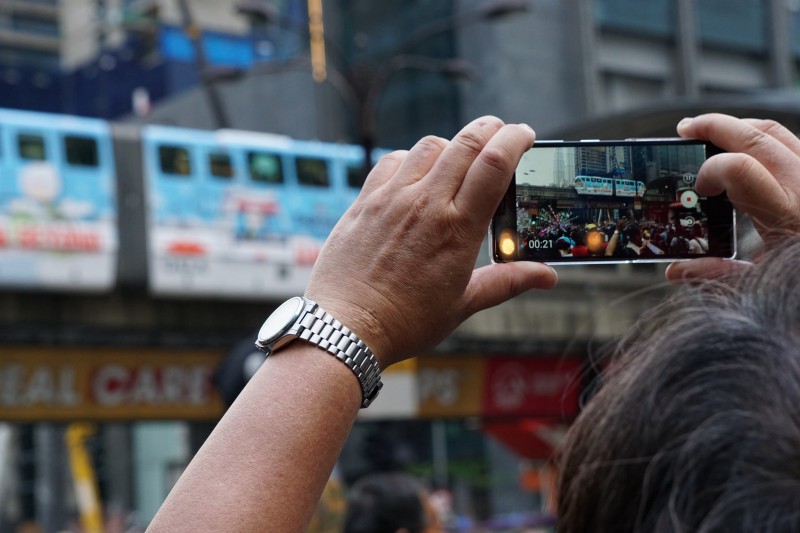A Community Camera Manifesto
Communities should take ownership of their video documentation. What should such a system look like?
It is significant that we learn about police violence only from cellphones, not from police body or dash cameras.
Body cameras fall off. Dash camera footage can simply be refused. Video storage cannot be afforded. Footage shot is often exempt from public records laws.
Thankfully, citizen-owned cameras are increasingly present. Sadly, this footage is often deleted or stolen. Security camera footage captured by a Burger King near Laquan McDonald’s shooting was seized and deleted. Later, the department claimed footage was missing due to a technical error, not tampering:
“Forensic testing was done on the Burger King surveillance system to determine if anyone tampered with the evidence and the testing did not reveal any such evidence,” she said. When asked who did the testing, Alvarez replied, “That’s all I’m going to say on this.”The shooting of Alton Sterling hit all the same beats:
But when police did not immediately release body and dash camera footage, and then after activists heard that officers have allegedly seized security camera footage from the convenience store that captured the shooting, Reed and others decided to publish the video. They began posting it to Facebook and Instagram around 5 p.m. on Tuesday. Soon it had gone viral.Facebook was essential again following the shooting of Philando Castile, when Castile’s girlfriend, Diamond Reynolds, started a livestream to document the aftermath.
Were it not for cellphones and Facebook, would as many people be learning about these events and agitating for change? I suspect not.
To be sure, there are great forces in play here which cameras and sharing networks cannot solve alone. The events above were documented, but there were no convictions and these tragedies continue to occur.
But we should never stop documenting. Footage reminds the unaware that racism is our not only our history but also our present. Footage continues to change the political discussion and keeps it alive. Footage continues to bring charges, which will someday stick.
After the shooting, Diamond Reynolds’ phone was taken by police, who later used it to access her Facebook account. Facebook says a technical malfunction led to her video initially being removed, but “declined to speak further to the incident.” (These technical errors we can’t talk about happen often in these cases.)

I’m worried about how this might occur on a larger level. Will police departments file motions to remove evidence while cases are open? They’re already filing emergency motions to lock accounts, as they did during a stand off with Korryn Gaines, who was broadcasting her POV. Will Facebook Live start censoring violence the same way they censor nudity, in all forms? Already, their existing censorship policies are blurring problematically with political pressures, which is confounded when don’t clearly state what is or isn’t allowed.
Congress has already demonstrated their lack of restraint, after taking Facebook to task for editorial choices in their top stories section. If anonymous allegations about front page editorial choices (which, you know, why wouldn’t they edit a top stories list?) attracts attention, I worry how regulators will react when Facebook Live is used by less sympathetic documenters. Or, when they realize how much control Facebook has over what we see.
Let me be clear: I do not blame Facebook. They bear no responsibility to cover the shortfalls of a democratic government. This isn’t their job. (Once upon a time, the provisioning of neutral channels was undertaken by the government.)
We should not depend on Facebook.
We should take responsibility for the creation of an accountable, fair, and accessible video network, which is beyond the reach of influence. To build such a network, a distributed system is our only hope.
One Possible Community Camera Network
You install the camera app on an old smartphone and mount it in your window, with a power cable running down to a nearby outlet. From your apartment, the camera has a good view looking down on the street.
Your phone records constantly now. It records at a moderate resolution and elegantly degrades old video when storage is overwhelmed.
Old footage is removed first, but video isn’t deleted all at once. Footage with very little movement or no humans detected in the frame is deleted first. Interesting footage is reduced to only key frames or taken down in resolution. Eventually, old footage is nothing more than key images recording presence at a specific date and time. Recent footage stays complete.
The footage you record lives on your phone. It isn’t uploaded to a server and you are the only one who can grant others access to it.
Others can see that you phone has recorded in that location. When you first step up your camera, you’re prompted to select a image illustrating your field of vision. This, combined with your device’s location, is freely accessible. That you are filming a specific area is not a secret.
At regular intervals a record of your footage is pushed to a blockchain. This shared database serves as a record that footage was shot in a location and a mechanism for ensuring footage is not edited or manipulated.
If someone wishes to access footage, they file a request. A request is made by providing the requester’s name, a small area and a time range, and the reason for the request. All cameras which were filming in these regions are messaged. Their owners are asked if they wish to provide access to the footage. If so, their video is uploaded and shared and a record of the request and access is recorded in the shared blockchain. This is the only time intact footage leaves their device.
Footage may leave the device in a piecemeal, illegible fashion. This distributed backup mechanism is supported by voluntary servers, in a fashion similar to BitTorrent. Smartphones with very little storage or handheld devices recording ad-hoc will use this capability. A user can open the app and start recording an event wherever they are, with distributed backup occurring as they shoot. If their device is lost, taken, or damaged their footage can be reassembled and unlocked with a password. Footage recorded ad-hoc will still be noted on the blockchain and requesters may search and ask for access.
As you sketch out a possible community camera network a clear set of questions emerge:
- How long should footage be preserved and where does it live?
- How should footage be searched and discovered?
- What constitutes a legitimate request for footage and who gets to determine legitimacy?
- How is frivolous or dangerous usage prevented while not hindering legitimate requests? The central challenge is producing a verifiable, accessible record without being creepy.
Principles for a Community Camera Network
We don’t have to build the network described above. That sketch exists as a thought experiment to explore how people will use such a network and to discover its aspects which could become problematic. It should make you feel a squeamish. Only by walking up to the line where we worry can we negotiate what truly matters to us and embed these politics into our software. The only other option is ceding this emotional terrain to Facebook, Twitter, and others and hoping they make good decisions.
After sketching out several versions of this software and performing this negotiation personally, I’ve arrived at 5 principles to which I believe community camera networks should adhere.
You will probably disagree or have a principle I don’t cover. If so, write it up and share it. This is the moment we get to have this conversation.
Principle #1: Video is evenly accessible.
Footage is for the welfare of the community, which includes both citizens and police. If different groups have different access mechanisms they will have different power.
This is best expressed by the Laquan McDonald case. The release of the tape was delayed for 13 months, which happened to correspond with Rahm Emanuel’s reelection campaign. Knowledge of the tape’s existence was only known after an internal whistleblower acted, and even then 15 requests from journalists were denied.
If access to footage is controlled by one party it will eventually benefit that party. A community camera network should be evenly accessible to equally support members of the community.
Principle #2: Production and access controls are transparent.
If a network and its footage is to be taken seriously it must reliantly document how, when, and where footage is captured. Further, footage must be verifiable and resist editing.
Currently, this process isn’t even transparent to police who wear cameras. In Lake Park, officers are suing their town because cameras put into standby never went into standby. Those filming often need to pause or mute cameras. As owners, they should be able to. But if they submit their footage to the community network, these actions must be documented. Right now, these mechanisms vary and resist definition.
Access controls, too, need documentation. A system which supports anonymous requests for footage encourages abuse or spurious requests.
The tricky question is whether it is necessary to publicly document the person who created the footage. Many who film suffer from reprisal. I don’t know the answer to this question.
Principle #3: Video cannot be easily viewed. (Mostly)
An easily accessible network risks developing into, well, Twitter. People could fish throughout the network, looking for footage to shame, troll, stalk, or otherwise harass individuals. We should not charge for access to footage, but accessing should have a cost. It should not be easy or quick.
Relying on the owner of the camera to approve access slows the request process down and prevents automated crawling. Ideally, people should be able to use the network to broadcast footage openly, but this should not be the default or persistent.
Principle #4: Data will not live forever.
Requiring data to live forever will discourage implementation.
The cost of video documentation is already hindering adoption. The Clarksville, Indiana police department has suspended the use of body cameras because it cannot afford to store footage for the legally mandated time period. Across the country, costs are the most frequently debated aspect of police camera programs.
Explicitly acknowledging deletion forces us to make decisions about how footage will decay, ideally in a systematic fashion.
Principle #5: Participation with the network cannot be blocked.
No camera should be denied access to the community camera network.
The hard question is whether every camera should have undeniable access to broadcast live. We want to create a network where C-SPAN can broadcast live from the House floor but we don’t want a network where one could broadcast acts of violence to stoke fear or pain. I don’t have a good answer to this but currently believe network participation and managed access is undeniable but live broadcasts can be halted.
The beauty of not having an easily accessible network which documents access is that legislation–who can film what, where and who can publish footage–should take place around the network. Private buildings can ban physical cameras but they cannot ban the community camera network. Hulk Hogan can sue Gawker, but Hogan can use the network to document his hotel room all he wants.
What principles have I missed? Which have I botched? We should not allow one person or company to own a canonical camera network or its definition. And we certainly should not avoid this conversation.
I hit publish on this earlier than I would’ve liked because we are blindly writing the rules and standards for video documentation every day with our actions. Each week I updated the intro as a new occurance answered a hypothetical question I had posed. Hopefully, this outline can begin an open, explicit conversation on video documentation, storage, and access. We don’t neccessarily need to build an app, but we do have to decide what matters.

